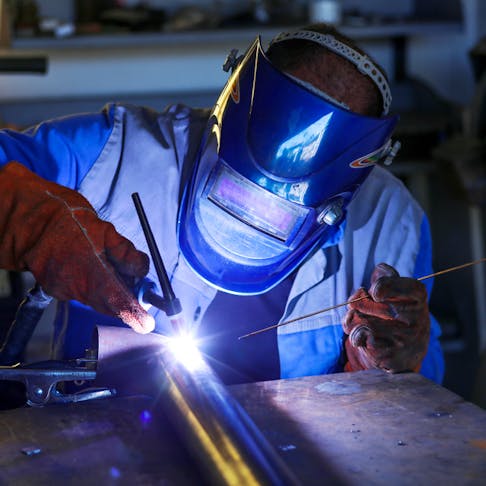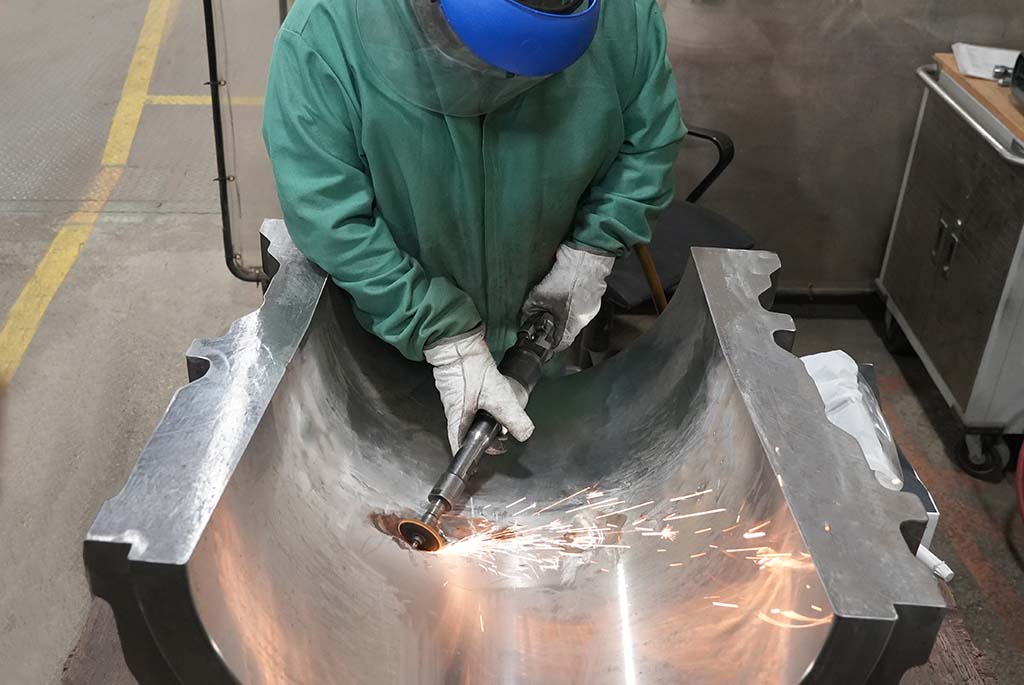Common Welding Repair Work Issues and How to Address Them Properly
Welding repairs often come across an array of issues that can endanger the integrity of the end product. Common problems consist of poor penetration, porosity, and misalignment, to name a few. Each issue provides distinct obstacles that require details strategies for resolution. Recognizing these problems is crucial for welders intending to boost their skills and outcomes. This discussion will certainly discover these usual welding repair work issues and reliable approaches to address them.
Inadequate Infiltration
Poor infiltration takes place when the weld metal fails to fully fuse with the base material, resulting in weak joints and potential structural failings. This issue often stems from not enough heat input, wrong electrode angle, or inappropriate welding speed. Welders might encounter insufficient infiltration as a result of a miscalculation of the needed specifications for a details material thickness or type. Additionally, contamination on the base material's surface can impede efficient bonding, worsening the problem. To resolve poor infiltration, welders ought to guarantee appropriate setups on their tools and maintain a clean job surface area. Regular evaluation of welds is recommended to determine any shortages early, permitting prompt modifications and the avoidance of jeopardized architectural honesty in welded assemblies.
Porosity
Porosity is an usual flaw in bonded joints that materializes as tiny gas bubbles trapped within the weld steel. This problem can compromise the stability of the weld, resulting in lowered toughness and potential failure under anxiety. Montana Mobile Welding and Repair Belgrade Fabrication. Porosity typically occurs from contamination, dampness, or incorrect welding techniques, which enable gases to escape right into the liquified weld pool. To resolve porosity, welders ought to assure proper surface preparation, preserve a clean functioning atmosphere, and make use of suitable welding parameters. Furthermore, choosing the ideal filler product and shielding gas can minimize gas entrapment. Normal assessment and screening of welds can assist recognize porosity early, ensuring prompt corrective actions are taken, thus preserving the quality and reliability of the bonded framework
Misalignment
Imbalance in welding can arise from numerous variables, including improper configuration and thermal growth. Recognizing the source is necessary for efficient resolution. A number of correction strategies are readily available to straighten elements and guarantee structural integrity.
Causes of Misalignment
Welding misalignment usually comes from a variety of underlying issues that can jeopardize structural stability. One main reason is improper fit-up of components before welding, which can bring about gaps and irregular surfaces. Variations in thermal expansion during the welding process can additionally lead to distortion, particularly if the products being joined have different coefficients of growth. Furthermore, insufficient securing and fixturing may fail to hold parts safely in place, leading to movement throughout welding. Badly maintained equipment, including welding machines and tools, might introduce incongruities in the weld grain, more contributing to imbalance. Operator mistake, stemming from insufficient training or experience, can likewise play a substantial duty in developing misaligned welds.

Improvement Methods Available
Addressing misalignment successfully needs a combination of restorative techniques tailored to the particular issues handy. One usual technique is making use of fixtures or jigs to hold parts in the proper placement throughout welding, making certain constant alignment. In addition, pre-heating the materials can assist minimize distortion and boost fit-up. For considerable imbalance, mechanical adjustment techniques, such as utilizing hydraulic jacks or clamps, can be employed to deal with the position before welding. Post-weld warm treatment might additionally be essential to ease stress and anxieties triggered by misalignment. Finally, cautious inspection and adjustment during the setup stage can stop misalignment concerns from coming to be significant problems, advertising a smoother welding procedure and boosting total architectural stability.
Distortion
Distortion is a common difficulty in welding that can arise from numerous variables, including irregular home heating and cooling. Recognizing the reasons of distortion is vital for executing effective avoidance strategies. Resolving this problem not only enhances structural integrity yet also boosts the general high quality of the weld.
Sources of Distortion
When based on the extreme warmth of welding, products commonly undertake modifications that can lead to distortion. This phenomenon primarily emerges from thermal growth and tightening during the welding procedure. As the weld area warms up, the material increases; upon air conditioning, it gets, which can develop interior stresses. Furthermore, unequal heating throughout a work surface can aggravate these anxieties, causing bending or bending. The kind of product likewise plays a considerable duty; steels with differing thermal conductivity and coefficients of expansion may react in different ways, bring about uncertain distortions. Bad joint style and insufficient fixturing can add to misalignment during welding, boosting the chance of distortion. Comprehending these reasons is necessary for efficient welding repair and prevention methods.
Avoidance Techniques
Efficient avoidance methods for distortion throughout welding focus on managing warm input and ensuring correct joint style. Maintaining a constant warmth input helps to minimize thermal development and contraction, which can lead to distortion. Using techniques such as pre-heating the workpiece can additionally decrease the temperature slope, advertising consistent home heating. In addition, choosing suitable joint designs, such as T-joints or lap joints, can improve stability and minimize stress concentrations. Carrying out appropriate fixturing to protect the workpieces in position even more aids in maintaining positioning during the welding procedure. Staggered welding sequences can distribute heat much more equally, preventing localized distortion. By using these techniques, welders can greatly lower the likelihood of distortion and enhance the general quality of their welds.
Fracturing
Breaking is a typical issue encountered in welding repairs, typically resulting from numerous variables such as inappropriate cooling prices, material selection, or poor joint preparation. The incident of fractures can substantially compromise the stability of the weld, bring about possible you could try these out failures throughout procedure. To address this problem, welders need to initially examine the source, ensuring that materials work and suitably chosen for the details application. In addition, controlling the cooling rate throughout the welding procedure is vital; quick cooling can cause stress and anxiety and cause breaking. Proper joint layout and preparation also add to reducing the danger. Implementing these techniques can boost weld high quality and longevity, inevitably decreasing the chance of splitting in completed weldments.

Incomplete Combination
A significant issue in welding repairs is insufficient fusion, which occurs when the weld metal does not appropriately bond with the base product or previous weld passes - Montana Mobile Welding and Repair Fabrication. This issue can lead to weak points in the joint, potentially jeopardizing the integrity of the welded framework. Variables adding to insufficient fusion include inadequate heat input, improper welding strategy, and contamination of the surface areas being joined. To address this problem efficiently, welders ought to guarantee proper pre-weld cleaning and surface area preparation, along with adjust their welding criteria to achieve sufficient infiltration and fusion. Normal evaluation during the welding process can also assist recognize incomplete combination early, enabling prompt corrective measures to improve the general high quality of the weld
Overheating
While welding fixings can enhance structural honesty, overheating presents a substantial challenge that can lead to product destruction. Too much heat throughout welding can modify the mechanical homes of steels, resulting in reduced toughness, boosted brittleness, and bending. This phenomenon is especially essential in high-stress applications where structural reliability is vital. Determining overheating can involve aesthetic inspections for staining or distortion, as well as keeping track of temperature throughout the welding procedure. To mitigate the risks related to getting too hot, welders ought to use suitable methods, such as controlling warmth input, changing traveling speed, and using appropriate filler materials. In addition, applying pre- and post-weld warm treatments can aid bring back material properties and improve the total high quality of the repair work, making sure lasting efficiency and safety.
Often Asked Questions
What Are the Common Signs of a Welding Defect?

Just How Can I Test My Welds for Quality?
To check welds for top quality, one can make use of visual inspections, ultrasonic screening, and radiographic approaches. Each strategy guarantees structural integrity, determines issues, and verifies adherence to specified criteria, inevitably boosting the integrity of the bonded joints.
What Safety and security Safety Measures Should I Take While Welding?
When welding, one must focus on safety and security by putting on ideal personal safety tools, ensuring proper ventilation, safeguarding combustible products away, keeping a tidy work area, and knowing environments to avoid injuries and accidents.
Can I Repair a Weld Without Redoing the Entire Joint?
Fixing a weld without redoing the whole joint is possible, relying on the damage (Montana Mobile Welding and Repair). Strategies such as grinding, including filler material, or using a welding procedure can efficiently address specific problems try this website while maintaining the surrounding framework
What Equipment Are Essential for Reliable Welding Fixes?
Important tools for reliable welding fixings consist of a welding device, wire brush, grinder, safety gear, clamps, and filler products. Each tool plays a vital function this contact form in ensuring high quality and safety during the fixing process. Porosity commonly occurs from contamination, wetness, or incorrect welding techniques, which allow gases to run away into the molten weld pool. Inadequately maintained devices, including welding machines and tools, may present variances in the weld grain, additional contributing to misalignment. When subjected to the intense warm of welding, materials often go through adjustments that can lead to distortion. Fracturing is a common issue encountered in welding repairs, frequently resulting from numerous variables such as incorrect cooling prices, material choice, or insufficient joint prep work. A considerable concern in welding repairs is incomplete blend, which occurs when the weld steel does not properly bond with the base material or previous weld passes.